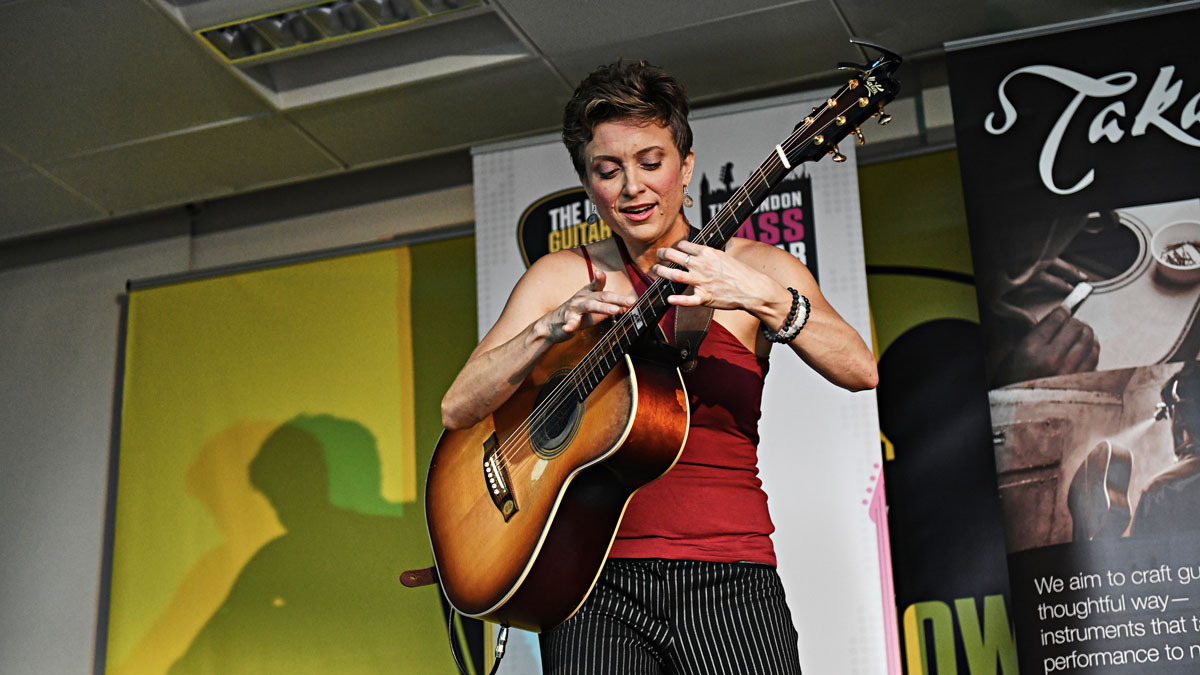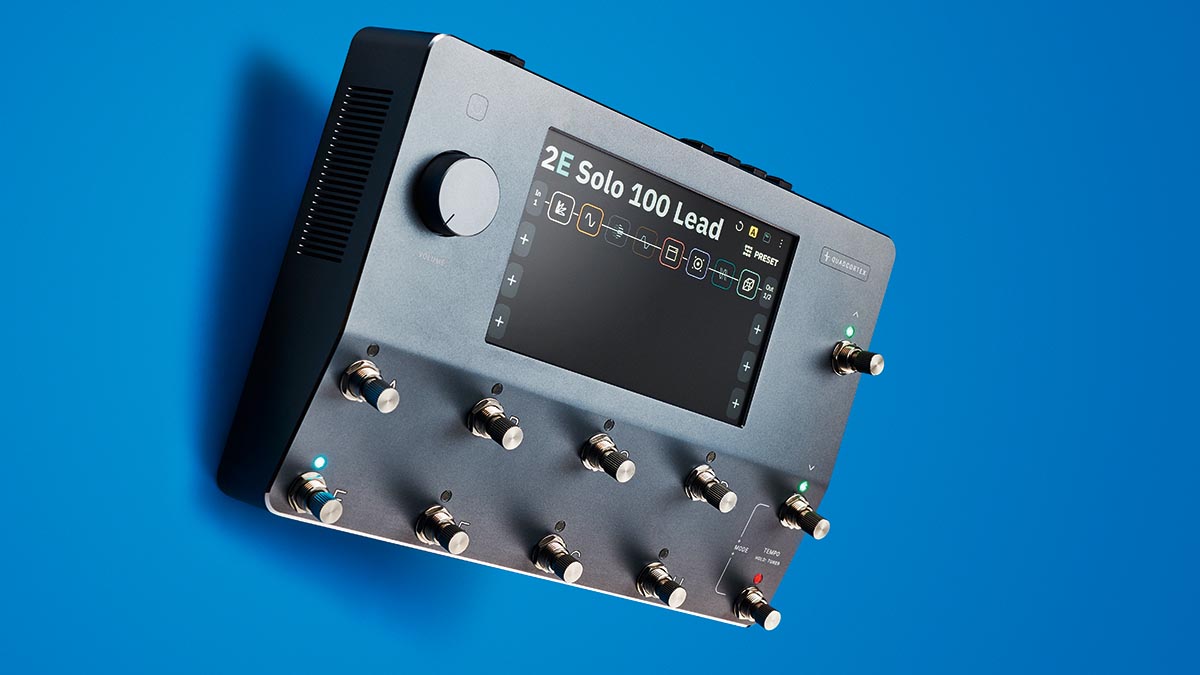Christie Lenée: "I would love a six-piece band but it is humbling to do everything yourself"
By mixing fingerstyles, two-hand tapping and improvised percussion, this acoustic virtuoso is extending the potential of the acoustic guitar

Christie Lenée is the sort of player who makes you rethink your approach to the acoustic guitar. She might well make you rethink the entire instrument.
Her style is percussive and kinetic, melodically adventurous, almost neoclassical, and from the outside it’s hard to know where to start, what element of Lenée’s techniques to unpick first and try to incorporate in our own playing.
There are elements to her playing that call to mind maverick fingerpickers such as Tommy Emmanuel, but Lenée’s style is her own. What she doesn’t have, however, is downtime.
Lenée has just got back to her home in Florida, where she’ll have just 36 hours or so before packing a case, grabbing a guitar, and heading out on the road again. She’s just back from a guitar festival in Colombia, and is preparing for some UK dates, having only been in London in September when she won Acoustic Guitarist of the Year 2019 at the UK Guitar Show.
Somehow, within this schedule, she’s got to find the time to finish preproduction on her full-length follow-up to 2016’s Stay. And that has to take priority. This period is crucial for Lenée. As she explains, this is when she rediscovers her compositions, with some of them having been written a long time ago, and refines them for the record.
“The Song For Michael Pukac that I played at the competition, I put that on a live album and my instrumental album, but I was never really happy with the way that it came out because I recorded right after I wrote it” she says.
“Now I am going back in there and realising how much the piece has evolved and I am finally going to do the studio version that I have always wanted to do, with more of the orchestrations that I am hearing in my head.”
All the latest guitar news, interviews, lessons, reviews, deals and more, direct to your inbox!
Lenée’s forthcoming album will be a mix of instrumental material and singer-songwriter tracks. Some she will be debuting on tour, but when travelling she only takes one guitar, and that rules out a number of her songs that were written on 12-string.
Typically she would take her Maton - chiefly because the pickup system is unbeatable - but as soon as this interview is done she is taking her Martin J-40 and the Taylor she won at the International Fingerstyle Guitar Championship in 2017 to see which plays better live.
I always have to remind myself that it is not really about the guitar; it is about the music, and the music is what drives me
She has some studio dates booked and wants to be playing the guitar that she’ll be tracking on, especially since the Maton’s thinner neck makes it all too easy to get too comfortable before going back to the thicker modified low oval profile of the Martin.
Her pedalboard, too, has been downsized. “I just have my footstamper and tambourine, which is a very significant part of my sound,” she says. “I like to have percussion. And I have my delay pedal, which is pretty significant. I have a smaller looper, which I only use on a couple of songs a night, just to loop some rhythms if I want to be able to play a solo.
“I’ll have that and then a little booster pedal, a tuner, and my little vocal harmoniser. You can get these three-part harmonies that match the sound of your voice. So that’s kind of a big thing for me because a lot of my recordings have a lot of harmonies in the vocal music and it always makes me feel a little too solo without the harmonies, so that is a pretty important pedal.”

That feeling of isolation is one of the issues when playing solo acoustic guitar music. How do you fill up the frequencies? How do you maintain and accentuate the rhythm? Acoustic players have wrestled with this throughout the instrument’s history, and it has inspired innovative approaches like Lenée’s.
The guitar, to me, is an extension of the soul
“I would love to have a six-piece band with backing singers,” she says. “But it is humbling to show up and try to do everything myself. I have done my best trying to figure out how to make a big sound by myself.” This in part is why she was cool on looping for a while, with people just assuming that her parts were looped rather than being played live.
Now she can see the value in it, and live she will loop a few chords so she can “go wild” in the upper registers without the composition being hollowed out and losing its power. And that’s always the goal. That’s why Lenée plays as she does.
“Oh, absolutely, the guitar, to me, is an extension of the soul,” she says. “I always have to remind myself that it is not really about the guitar; it is about the music, and the music is what drives me.”
- Christie Lenée is on tour across the US in February, March and April.
Jonathan Horsley has been writing about guitars since 2005, playing them since 1990, and regularly contributes to publications including Guitar World, MusicRadar and Total Guitar. He uses Jazz III nylon picks, 10s during the week, 9s at the weekend, and shamefully still struggles with rhythm figure one of Van Halen’s Panama.

